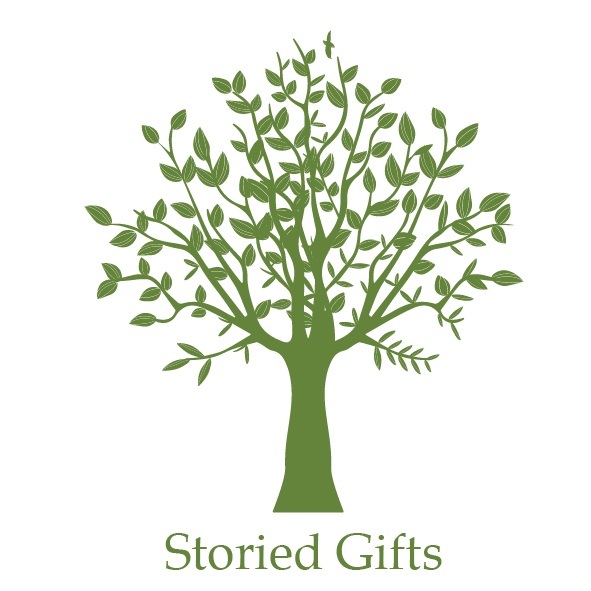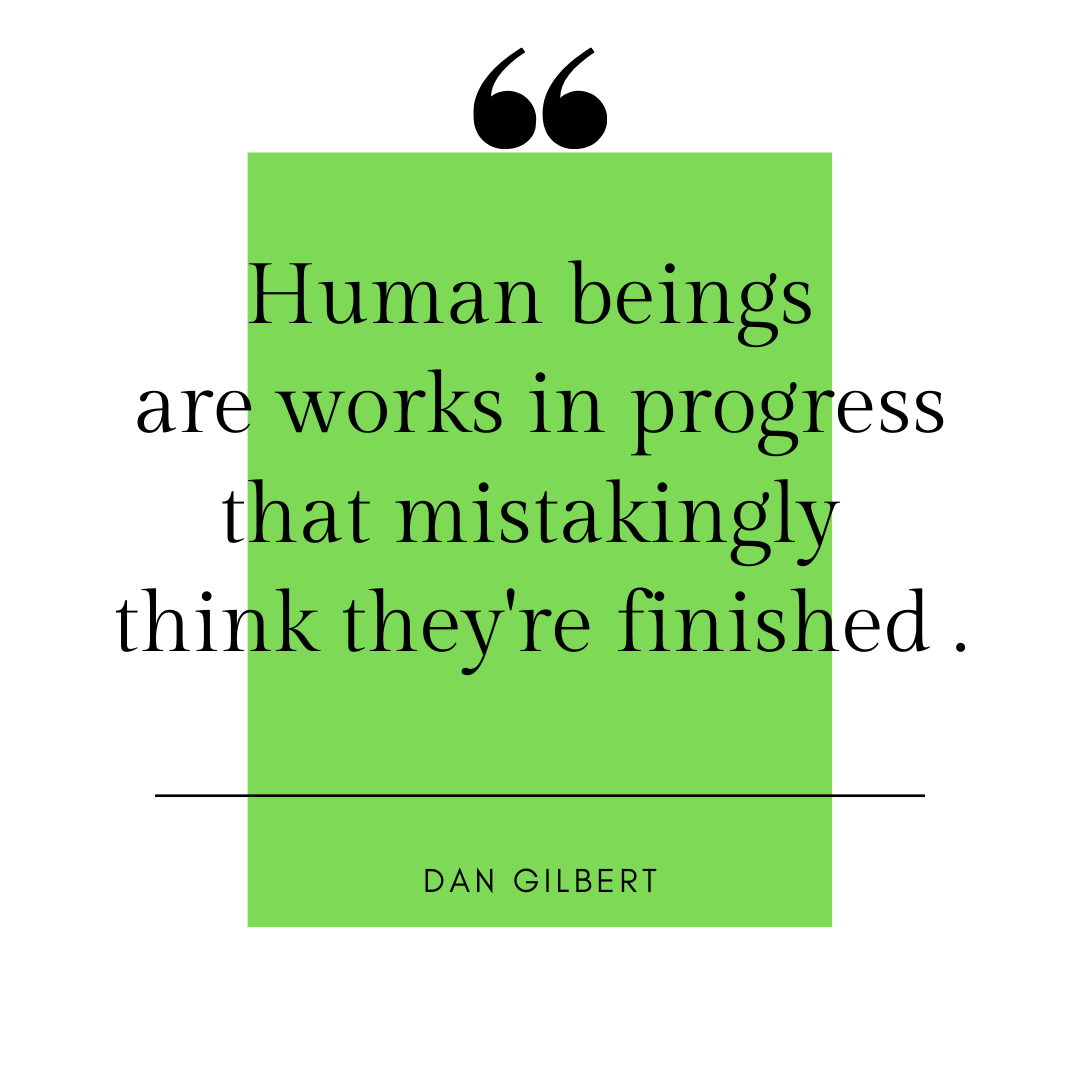Is There An Alternate You, Timeline Project Step Three
A great quote by Dan Gilbert for the post blog post, Is There An Alternate You? Timeline Project Step three
Disclosure: There are some affiliate links below, and I may receive commissions for purchase made through the links in the post. However, these are products I highly recommend. I won’t list anything I haven’t tried and found personally useful.
There is the life you live, and—in theory—there are ghost lives you might have lived had circumstances been different. This has been the premise for any number of movies as well as the puzzle of creative minds. What would your life look like now had you gone that other way?
In this installment of #personaltimelineproject, you’ll explore your past and breakthrough some distorted thoughts of possible alternate realities. With reflection, you’ll recognize the you of today couldn’t have come about any other way, and the person you’ll become needs the person of your past and present.
This post is step three of the series focused on helping you create and evaluate your personal timeline. You can find step one here and step two here.
EXPLORE YOUR STRATEGIC PROBLEM-SOLVING STYLE
Over at Psych Central, Athena Staik, Ph.D. offers six questions for reflection on this very topic. The purpose is to dig deeper and examine not just your thoughts and subconscious stories, but also the decision-making strategies you used to make choices.
1. Identify negative turns in life and consider what you gained or learned from the outcomes of those events.
You’ve heard stories of people who have dealt with considerable obstacles in life and then assert they are glad for the person they are right now and wouldn’t want to undo the challenge they faced. These survivors harnessed the things they could control—their response and actions—in a difficult situation to move forward. Can you say the same for any of your past challenges?
2. Identify key decisions that turned out to be fruitful. What made the choice effective? What positive results did it produce? How did you respond at the time (thoughts/feelings) to each decision/results? At what point did you know this decision was a ‘good’ one?
As we gain wisdom, we realize that some (hell maybe MOST) of our prior ideas about life were faulty. For example, in hindsight, I recognize how naive I was when I made decisions about education, career, marriage, and parenting.
A lot of my early adult choices were based on NOT being anything like my genetic mother. My childhood with her was a tumultuous one. I wanted a life with no drama that looked “traditional” by comparison.
So, in contrast, I have remained in one relationship, lived in one place, and raised two children with whom I’m close. It has been a very different trajectory than my mother’s life. The decisions were positive, as were the outcomes. I wished I’d understood earlier that I needn’t have acted based on fear.
3. Identify choices that didn’t turn out well. In each case, what made this a poor choice? What were the costs? How did you respond to each (thoughts/feelings in response to choice/outcomes)? When did you conclude this to be a poor choice?
Hands down, one of my big misconceptions was in not recognizing what it took to be skilled or talented. I also misunderstood what it means to be intelligent.
I felt I was a fraud in school and chose not to apply myself to anything for fear of failing. I was an average student.
This warped thinking impacted my life for years. I earned a bachelor’s degree that wasn’t ideal and pursued a vocational path that wasn’t a great fit.
It took me a long time to learn that trying, really trying, and failing IS key to becoming skilled at most anything. And the measure of intelligence is broader than any test or scholastic measurements can define. And tenacity is one kind of intelligence, too.
The remainder of Staik’s questions focus on identifying which strategic problem-solving styles worked well versus those which did not. One of my problem-solving strategies is to talk things through and ask for council. I like to seek advice, and once I make a decision, I’ll act quickly.
Then in the last of the six questions, Staik suggests you dig even deeper to review the steps of your problem-solving style you used.
THE RED HERRING OF GREENER PASTURES
We began the timeline project with a goal of re-framing feelings and stories about the past. By now, in the process of working through creating and questioning, you have taken a broader view of where you’ve been and who you are as a result.
The red herring—a thought trap---is festering in regret and the “what-if scenario.” What if you’d done this or that, or if this other thing had happened instead?
You will never know if other routes would have led to a greener pasture because you most certainly wouldn’t be the you of today. Therein lies the flawed logic of the “if only” internal dialogue.
Think again about those survivor stories where people overcome great odds in life. The most important characteristic is that those people are content with who they are right now. The greener pasture, as it turns out, is finding contentment for what they have rather than loss for what they don’t.
THE IMAGE OF YOUR FUTURE SELF
The combination of events and your feelings and thoughts about them are all fluid. I love the line attributed to David Bowie, “Aging is an extraordinary process where you become the person you always should have been.”
Psychologist Dan Gilbert presents a compelling TED Talk titled “The Psychology of Your Future Self” that elaborates on this idea, too, where he explains that humans have a fundamental misconception of time. We can’t get beyond the present self to see who we might become. Everything that has happened in their past is the culmination of the endgame of the present.
And yet, as we look back, we realize we’ve changed. We just don’t subconsciously invest or imagine the future self as much. This explains the doughnut I had this morning versus the walk I didn’t take instead.
As you focus on contentment in your present, there is reason to be hopeful and excited about the possible you of the future as well. In the fourth and final phase of your personal timeline project, you’ll examine how you are the creator of meaning and the power that comes with that role.
Postscript: Spring is a time of thinking refresh and organizing of our spaces. I was in the mode BEFORE the pandemic required we all stay inside. If you need help and inspiration, I recommend the Get Organized Gal’s courses for support.
I used her course to organize my office, and it is in pretty good shape these days. Success in one space has lead to cleaning channels to other rooms and photos as well. Check out he courses here.
Sherry and Alexandra Borzo together in Lima, Peru
Sherry is the founder of Storied Gifts a personal publishing service of family and company histories. She and her team help clients curate and craft their stories into books. When not writing or interviewing, Sherry spends loads of time with her grandchildren and lives in Des Moines, Iowa.
STORIED GIFTS SHOP
Need a beautiful infusion of inspiration for your storied life? Please check out the Storied Gifts Shop where we offer Wearable Wisdom & Daily Inspirations.
The shop is a mother and daughter venture for Sherry and Alexandra Borzo of Content In Motion. They both work to help their client's stories sing. The shop is their effort to inspire a focus on healthy minds for everyone through positive thought.
LET’S BE FRIENDS
Please like the Storied Gifts Facebook page. We offer tips and inspirations to help you tell your stories and live a storied life by harnessing your healthy mind through the power of the thoughts you choose.


